Mothers’ meeting on Makalu
“We walked into base camp, dropped our packs, threw on our down jackets, and looked up. Makalu chose that moment to expose her summit”, Adrian Ballinger wrote on Instagram after yesterday’s arrival at the foot of the fourth highest mountain on earth. “Awe is the only word to describe the feeling.” Ballinger is leading a team of US climbers that is remarkable in several respects. First, it is even the only expedition on this eight-thousander in Nepal this fall. Second, the team will try to realize the first ski descent from the 8,485-meter-high summit. And third, three of the five expedition members are women, two of them mothers, and that’s not just commonplace in high-altitude mountaineering.
![]() read more
read more
PR with a permit
The despair in Nepal must be great. There is no other explanation for the fact that the government in Kathmandu called a press conference these days only to hand out a permit for an expedition. Japanese climber Nobukazu Kuriki received the written permission to climb Mount Everest this fall from the hands of Tourism Minister Kripasur Sherpa. “Kuriki is climbing at a time when there is confusion in the world about the safety in Nepal after the earthquake”, the Minister said. “This will be an example for other visitors to come to Nepal which is safe for mountain climbing.” The 33-year-old Japanese climber sang the same tune: “The main purpose of my climb is to spread the message that Nepal is safe for climbers and trekkers even after the earthquake.”
Kuriki – as reported – wants to climb Everest from the Nepal side, after the Chinese authorities gave all expeditions to Tibet the cold shoulder. Today Kuriki flew from Kathmandu to the Khumbu region for acclimatization. In 2012, in his last attempt to climb Everest in fall, the Japanese had suffered severe frostbite. Nine fingers had to be amputated. Like then, Kuriki again plans to climb solo and without bottled oxygen, this time on the normal route. The “Icefall Doctors” will prepare for him the route through the Khumbu Icefall.
![]() read more
read more
Nepal now? Absolutely!
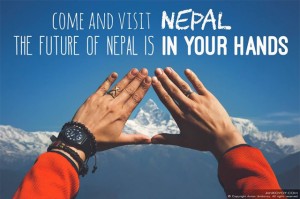 The financial aftershock is probably unavoidable. But it is important to keep the vibrations for Nepal within limits. The fall trekking season is just around the corner, and the government anticipates a dramatic 50 percent slump in tourism. “The number of foreign tourists has declined after the earthquake”, says Tourism Minister Kripasur Sherpa. “This is a heavy burden, because tourism is very important for the Nepalese economy and people.” The Government points out that international independent earthquake experts have declared the most popular trekking routes in Nepal, the Annapurna Circuit and the Everest Base Camp Trek, for nonhazardous. “Tourists don’t take higher risks any more”, says Kripasur Sherpa.
The financial aftershock is probably unavoidable. But it is important to keep the vibrations for Nepal within limits. The fall trekking season is just around the corner, and the government anticipates a dramatic 50 percent slump in tourism. “The number of foreign tourists has declined after the earthquake”, says Tourism Minister Kripasur Sherpa. “This is a heavy burden, because tourism is very important for the Nepalese economy and people.” The Government points out that international independent earthquake experts have declared the most popular trekking routes in Nepal, the Annapurna Circuit and the Everest Base Camp Trek, for nonhazardous. “Tourists don’t take higher risks any more”, says Kripasur Sherpa.
![]() read more
read more
With nine finger stumps to the top of Everest?
It has gone out of style to climb Mount Everest in fall. This happened even though some of the most spectacular summit successes on the highest mountain in the world have been made in the post-monsoon period: Remember only the first ascent through the Everest Southwest Face by the British Doug Scott and Dougal Haston in September 1975 or the success of the US-American Carlos Buhler, Kim Momb and Lou Reichardt via the East Face in October 1983. However, the climbing season has moved more and more into spring since commercial expeditions have taken over on Everest – due to higher temperatures compared to fall and to the usually lower risk of avalanches. Since 2000, only 36 summit successes have been recorded in September or October – next to nothing compared with over 5,000 ascents in spring since the turn of the millennium. The last ascent to the top of Everest in fall dates from five years ago: In October 2010, the American Eric Larsen and five Sherpas reached the highest point at 8,850 meters. This fall, there will be another attempt to climb Everest from the Nepalese south side. According to the “Himalayan Times” the so-called “Icefall Doctors” – a group of high specialized Sherpas – arrived at Base Camp in order to fix a route through the Khumbu Icefall.
![]() read more
read more
An unusual successful team
Things didn’t go well on the eight-thousanders in Karakorum this summer. “It was just too hot, and the conditions were too dangerous”, the German mountaineer Billi Bierling, who had tried unsuccessfully to climb Broad Peak, wrote to me. This mountain was scaled only twice this season: by the Argentine Mariano Galvan and Andrzej Bargiel from Poland, both climbed solo. Bargiel also succeeded in skiing down to the Base Camp. A Pakistani high altitude porter died in an avalanche.
All K 2 expeditions returned home without summit success. 13 climbers reached the highest point of Gasherbrum II. There was a fatality too: The Pole Olek Ostrowski disappeared on G II and was not found. On neighboring Gasherbrum I, so far – two Czechs are still on the mountain – just a team of three was successful, including a German mountaineer, born in my hometown Cologne.
![]() read more
read more
Money for relief flights in Nepal runs short
The World Food Programme (WFP) has sounded the alarm. If the “United Nations Humanitarian Air Service” (UNHAS) does not receive additional money, the helicopter relief flights for the earthquake victims in Nepal have to be stopped at the end of August. According to the WFP, which manages the UNHAS, there is a shortfall of more than nine million US dollars to continue the flights as scheduled until the end of October.
![]() read more
read more
Deadly accident on Peak Lenin
“There are no easy mountains and certainly no easy seven-thousanders.” I remember very clearly these words of my Austrian expedition leader Herbert Wolf in 2011, on the 7,246-meter-high Putha Hiunchuli (Dhaulagiri VII) in Nepal. I had to turn around 150 meters below the summit because the weather conditions were deteriorating and I was too late. What Herbert meant, was the fact that the conditions can change even an apparently easy mountain into a difficult and dangerous one.
Commercial expedition operators often call Peak Lenin in Kyrgyzstan an “easy seven-thousander” or an “entry seven-thousander”. On 7 August, a Russian mountain guide died on the 7,134-meter-high mountain in the Pamirs.
![]() read more
read more
Speedy Ueli
Actually, Ueli Steck doesn’t like the nickname “Swiss Machine”. But once again he confirmed his reputation. As a precisely running Swiss watch, the 38-year-old completed his project “82 Summits”– on the double: “Speedy Ueli” scaled all 82 four-thousanders of the Alps in only 61 days, 19 days faster than previously intended. He covered the distance between the mountains using muscle power only: by bike or on foot.
With changing partners
Ueli shortened the descent from the peaks by paragliding where possible. Doing this he early had to say good-bye to his original partner for the project.
![]() read more
read more
Children on Everest? Irresponsible!
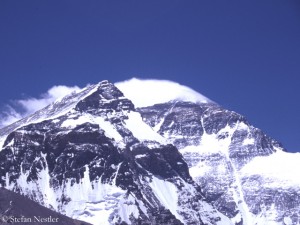 A twelve-year-old boy on top of Everest? Professor Thomas Kuepper can only shake his head. The occupational health and sport physician at the University Hospital Aachen is an internationally recognized authority on high altitude medicine who is also advising the International Climbing and Mountaineering Federation (UIAA). I had asked him what he thinks about the American Tyler, aged eleven today, who – as reported in my blog – wants to climb Mount Everest next spring. “You should file a charge of child abuse”, Kuepper wrote back disgustedly.
A twelve-year-old boy on top of Everest? Professor Thomas Kuepper can only shake his head. The occupational health and sport physician at the University Hospital Aachen is an internationally recognized authority on high altitude medicine who is also advising the International Climbing and Mountaineering Federation (UIAA). I had asked him what he thinks about the American Tyler, aged eleven today, who – as reported in my blog – wants to climb Mount Everest next spring. “You should file a charge of child abuse”, Kuepper wrote back disgustedly.
![]() read more
read more
Get ready to trek to Everest!
A cautious all-clear for the Everest Base Camp trail. “None of the major suspension bridges appear to be affected by new geotechnical hazards as a result of the earthquake”, says the report of a group of mountain guides and engineers of the US based agency Miyamoto International which is specialized on earthquake damage. “Much of the trail and most of the rock retaining walls (both above and below) the trail are undamaged. We have observed very little foundation damage to buildings.” At the end of June the team had assessed the condition of the trail from the village of Lukla to Everest Base Camp after the devastating earthquake of 25 April and the aftermaths. 83 percent of the observed lodges and houses were given a green tag, meaning that they were undamaged or hardly affected. And the others?
![]() read more
read more
Too young for danger of death
Tyler Armstrong wants to break the record. Or do his parents want him to do it? Or all three? Anyway, the family of the eleven-year-old (!) US-American has announced that Tyler will try to scale Mount Everest in spring 2016. Crazy! Then Tyler would be twelve years and four months old – thus one and a half years younger than his compatriot Jordan Romero, who climbed Everest in 2010 from the Tibetan north side and who since that time is registered in the record lists as the youngest climber ever on the highest mountain on earth.
![]() read more
read more
No fall expeditions to Tibet
China is closing Tibet for climbers for the rest of this year. “That is correct”, Dawa Steven Sherpa from the Nepalese expedition operator Asian Trekking confirms to me by email. “The Chinese authorities have decided not to issue permits for climbing in the autumn season in fear of further seismic activity telling that the mountains may be in a dangerous condition. They will issue climbing permits from 2016.” Furthermore, says Dawa Steven, the road that connects Nepal and Tibet, is still closed as it is under repair after the earthquake. “That means that equipment and logistics for the expeditions would not be possible to be transported via Nepal.”
![]() read more
read more
Back from Wetshoeland
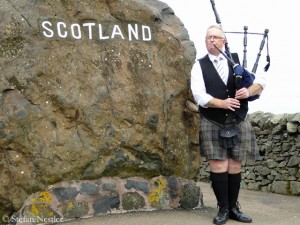 Scotland should be renamed into “Wetshoeland”. If it is not raining for once, you still get wet when hiking: from below. Laudably, there is another category in Scottish hiking guides besides the usual ones of difficulty and condition: the “bog factor”. If it is high, you can be sure that your shoes and stockings will be soaking wet after your walk. We had the smart sense to leave another pair of shoes and socks in the car, so that we were always able to start our next hike with dry feet.
Scotland should be renamed into “Wetshoeland”. If it is not raining for once, you still get wet when hiking: from below. Laudably, there is another category in Scottish hiking guides besides the usual ones of difficulty and condition: the “bog factor”. If it is high, you can be sure that your shoes and stockings will be soaking wet after your walk. We had the smart sense to leave another pair of shoes and socks in the car, so that we were always able to start our next hike with dry feet.
![]() read more
read more



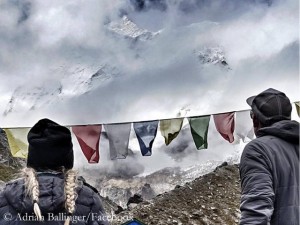

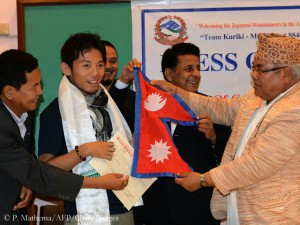
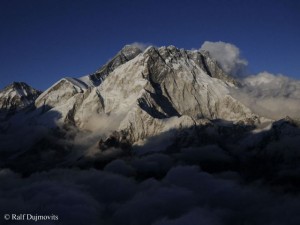
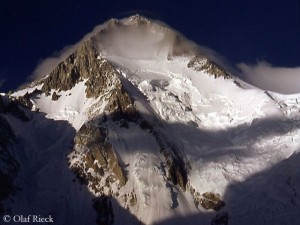
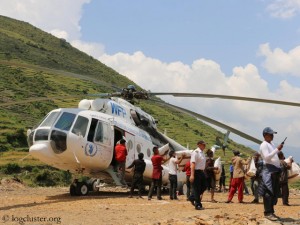
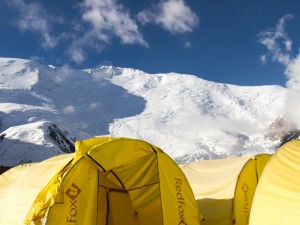
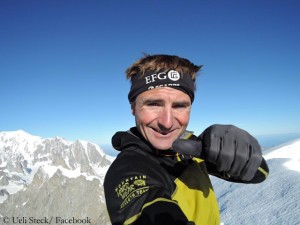
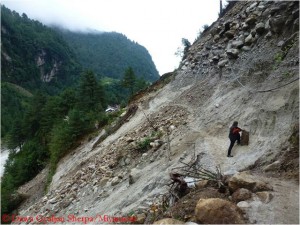
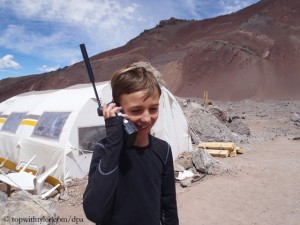
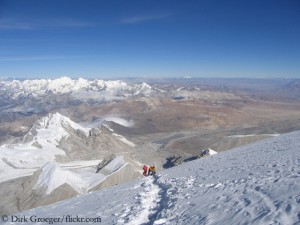

Feedback